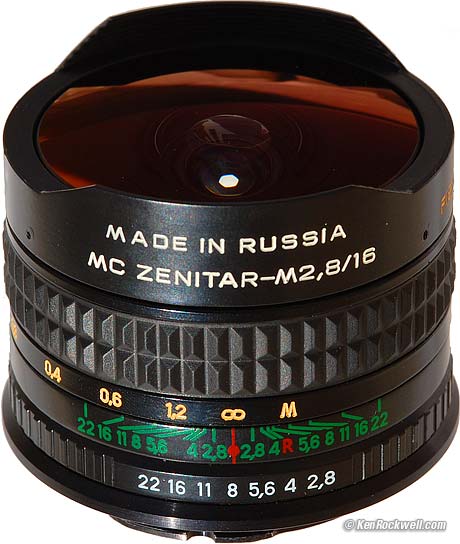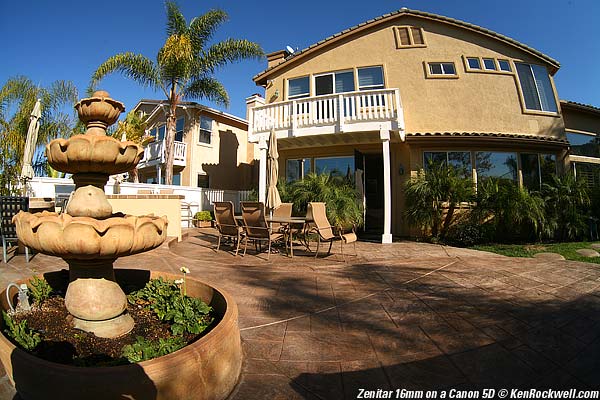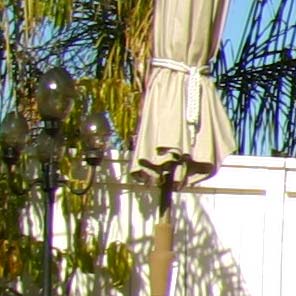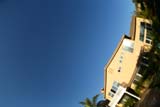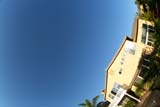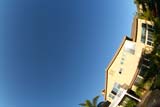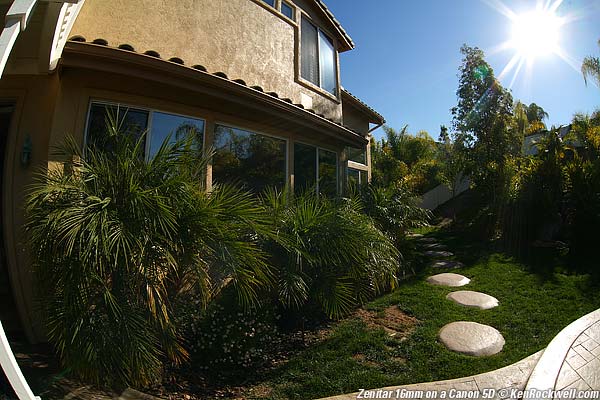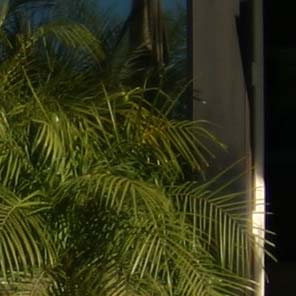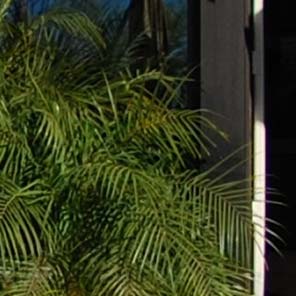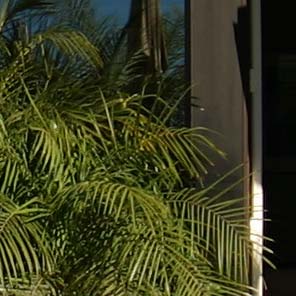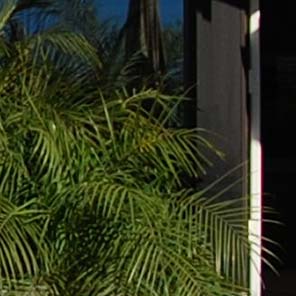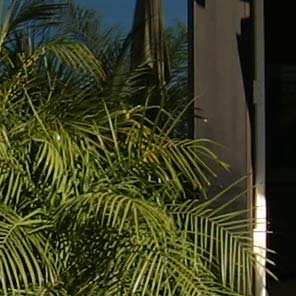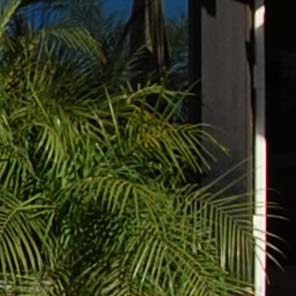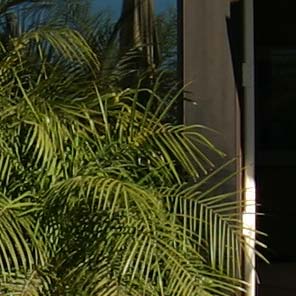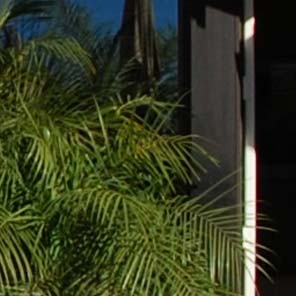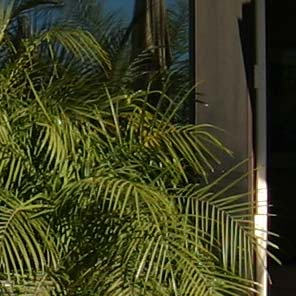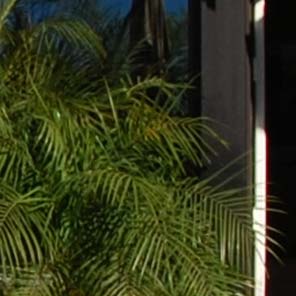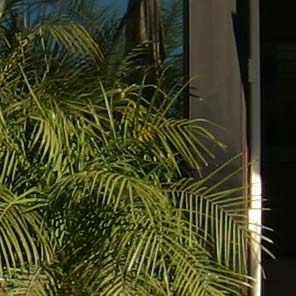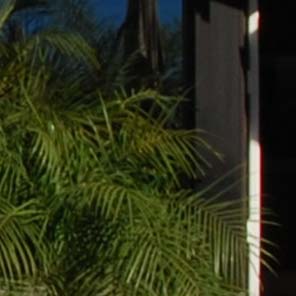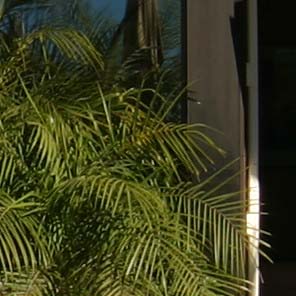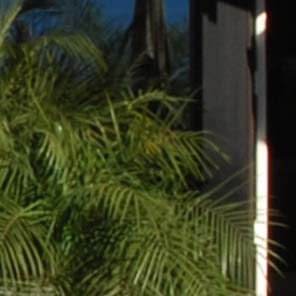|
I personally buy from Ritz, Adorama and Amazon. I can't vouch for any other ads.
|
Zenitar 16mm Fisheye
© 2006
KenRockwell.com. All rights reserved.
December 2006
Top Specs Performance Recommendations
I borrowed this from a friend. I've never bought one myself. You can't get them through the usual channels. I believe you can get them here for about $175 in the Canon mount or $225 in Nikon. You also can look here. It's made by Krasnogorsky Zavod somewhere in Russia.
It's designed for full-frame and film cameras. You lose the effect on smaller sensor cameras. You'd only get something like this on a DX camera, which is only mildly distorted and covering nowhere near 180 degrees:
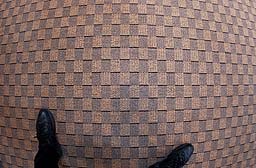 ,
,
instead of this, covering a full 180 degrees from corner-to-corner:
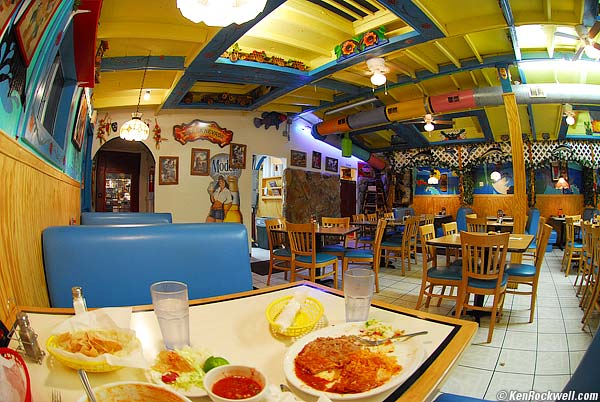 .
.
See also Crop Factor.
Good News:
1.) Cheap!
2.) Solid.
3.) Great optics at f/16, much better on a full-frame camera than my Nikkor 10.5mm fisheye is on my Nikon D200!
4.) Free soft focus effect at f/2.8.
Bad News:
1.) Hopelessly fuzzy at large apertures.
2.) No autofocus.
3.) Manual diaphragm: you have to open and close it by hand for each shot if you want to focus or compose.
3.) No manual focus confirmation indication on Canon cameras.
3.) No communication with your camera, which means manual guesstimate exposure on Canon.
Top Introduction Performance Recommendations
Name: Zenit calls this the MC Zenitar-M2,8/16 Fisheye.
Focal Length: 16mm fisheye. It fills the frame of a film, FX or full-frame digital camera. It doesn't do all that much on smaller frame cameras because they only use the center of the image. See also Crop Factor.
Maximum Aperture: f/2.8.
Optics: 10 elements in 7 groups.
Diaphragm: 6 blade manual. Stops down to f/22 in half-stop clicks, which is a pain trying to count them without taking my eye from the finder.
Filter Size: Rear-mount M26.5 x 0.5mm thread.
Close Focus: 1' or 0.3m from the image plane (the back of the camera).
Size: 2.554" diameter x 1.954" extension from flange (64.87 x 49.63mm), measured maximums. The measured nominal diameter of the front engraved section is 62mm, too big for the 61mm Nikon fisheye cap.
Weight: 10.385 oz. (294.4 g), measured, naked.
Top Introduction Specs Recommendations
Autofocus Color Color Fringes Construction Falloff
Filters Flare Flash Macro Serial # Sharpness
If you stop this lens down to f/16 and are prepared for 1950's style manual operation on a full-frame or film camera you can get better results than I get with my Nikon 10.5mm fisheye.
Used at larger apertures this Russian lens is softer, and regardless of aperture it is always a relative pain to use, with no automatic anything.
If you want seriously excellent results, the Canon 15mm fisheye on a full-frame Canon is the best, with the Nikon 16mm AF on a D3 second-best.
ANGLE OF VIEW back to Performance or back to Introduction.
The Nikon 10.5mm is very slightly wider on a D80 than the Zenitar is on a Canon 5D.
Full image of Zenitar 16mm on Canon 5D. Mouse over: 10.5mm on Nikon.
FOCUSING back to Performance or back to Introduction.
The focus turns with one finger.
It's solid and sturdy, but sloppier and grittier than Canon and Nikon manual lenses.
I find the easiest way to focus, especially since the diaphragm doesn't open automatically after your shot, is to focus by scale as we did in the 1940s.
Guess at the subject's distance and set it on the scale.
The distance scale is bizarre. It's in meters only, which is fine. The bizarre part is the arbitrary distances: Infinity, 1.2m, 0.6m, 0.4m and 0.3m. It's as if they had an English version marked at 4,' 2,' 1.3' and 1.' If I were the lens czar I'd mark it at Infinity, 2m, 1m, 0.5m, 0.4m and 0.3m.
COLOR FRINGES
(Lateral Chromatic Aberration or LCA)
back to Performance or back to Introduction.
Better than my Nikon 10.5mm! There is none with this Zenitar, and lots with the Nikon.
Here are the full guide images from which the crops are taken:
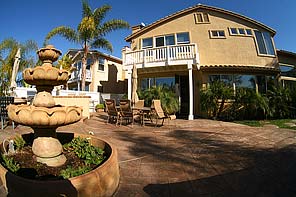 |
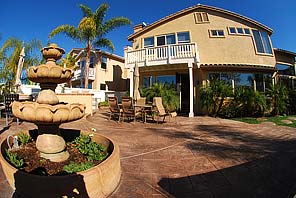 |
Full image, Zenitar 16mm, 5D |
Full Image, 10.5mm, D80 |
And here are 100% crops from the far left side. I enlarged the Nikon image slightly to make up for the the higher resolution and very slightly wider angle. This way they both match in size.
|
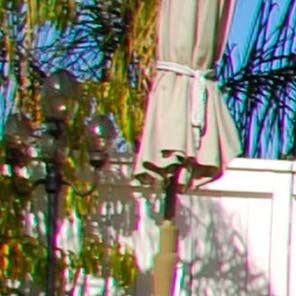 |
100% crop, Zenit 16mm, 5D |
116% crop, Nikon 10.5mm/D80 |
I see no differences from my other lenses. It's multicoated so this shouldn't be an issue.
back to Performance or back to Introduction.
Exterior: Enameled aluminum.
Focus Ring: Metal with rubber band.
Markings: Engraved nomenclature and focus scale. Painted index, apertures and depth of field scale.
Filter Threads: Metal (rear).
Mount: Metal.
Internals: Metal.
Noises when shaken: None.
Made in: Russia.
back to Performance or back to Introduction.
It's not bad, even at f/2.8. Fisheyes don't have the illumination issue of conventional lenses.
If you deliberately look for it, it's gone completely by f/8.
It's got an almost imperceptible darkening of the last millimeter of the corner at f/5.6.
It's got just a tiny amount of falloff at f/4.
It's got some falloff at f/2.8
It's almost impossible to find something evenly illuminated across 180 degrees with which to illustrate this, other than a photometric sphere or the overcast days we've heard about in California but have never seen.
As an example of the futility of this, here's some California sky. The dark band you see is the band of naturally polarized light at 90 degrees from the sun. The sky gets brighter naturally on the left and right sides of these images.
I only can see this on my 30" screen and looking in the corners.
If you want to avoid falloff, stick with f/4 or smaller.
If you want to avoid any detectible falloff whatsoever, stick to f/8 or smaller.
Remember that if you want a image sharp in those corners you need f/16 anyway.




